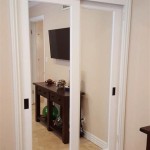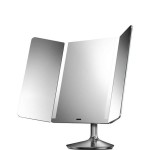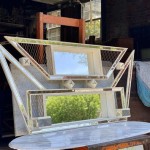Can I Screen Mirror to TV Without Wi-Fi?
Screen mirroring, the ability to display the content of a smaller screen like a smartphone or tablet onto a larger display like a television, has become increasingly popular. While Wi-Fi is the most common method for achieving this, several alternative methods exist for screen mirroring without a Wi-Fi network.
Wired Connections
Wired connections offer a reliable and often higher-quality mirroring experience compared to wireless methods. Several options are available:
*HDMI Cables:
The most straightforward method involves using an HDMI cable to connect the device directly to the TV. This provides a stable, high-bandwidth connection suitable for high-definition video and audio streaming. Adapters may be necessary depending on the device's output port (e.g., USB-C to HDMI, Lightning to HDMI). *USB Cables:
Some TVs support screen mirroring through a direct USB connection. This method often requires specific drivers and software, and functionality can vary depending on the device and TV compatibility. *MHL Cables:
Mobile High-Definition Link (MHL) cables combine USB and HDMI functionality, enabling both charging and screen mirroring. MHL support has become less common in newer devices, however.Wireless Options Without Wi-Fi
Even without access to a Wi-Fi network, certain wireless screen mirroring options are available:
*Miracast:
This peer-to-peer wireless technology allows direct screen mirroring between compatible devices. It creates a direct Wi-Fi Direct connection between the source and display, bypassing the need for a traditional Wi-Fi router. Some smart TVs and streaming devices have built-in Miracast support. *Wi-Fi Direct:
Similar to Miracast, Wi-Fi Direct creates a direct connection between two devices. It allows for screen mirroring and file sharing without needing a separate Wi-Fi network. Compatibility between devices is essential.Using Adapters and Dongles
Several hardware solutions bridge the gap between devices and TVs for screen mirroring without Wi-Fi:
*Wireless Display Adapters:
These devices plug into the TV's HDMI port and create a wireless network for the source device to connect to. They can support various protocols like Miracast and AirPlay. *Streaming Devices with Mirroring Capabilities:
Devices like Chromecast, Roku, and Amazon Fire TV offer screen mirroring functionality, often through proprietary apps or protocols. While primarily designed for streaming online content, they can also mirror device screens locally. *HDMI Adapters with Built-in Wireless Functionality:
Some specialized HDMI adapters combine wired connection reliability with wireless capabilities, allowing devices without direct HDMI output to connect wirelessly to the TV.Choosing the Right Method
Selecting the appropriate screen mirroring method without Wi-Fi depends on several factors:
*Device Compatibility:
Ensure both the source device (smartphone, tablet, laptop) and the TV support the chosen mirroring method. Check specifications for HDMI, MHL, Miracast, or Wi-Fi Direct compatibility. *Content Type:
For high-quality video and audio streaming, wired connections like HDMI are generally preferred. For simpler tasks like displaying presentations or photos, wireless methods may suffice. *Budget:
Wired solutions like HDMI cables are often the most affordable. Wireless adapters and streaming devices can offer more versatility but come at a higher cost. *Technical Expertise:
Setting up wired connections is generally straightforward. Wireless methods might require some configuration and troubleshooting, especially when dealing with device compatibility.Troubleshooting Potential Issues
While screen mirroring offers a convenient way to share content, users may encounter challenges:
*Connection Problems:
Ensure cables are securely connected and devices are properly paired when using wireless methods. Restarting devices can often resolve minor connection issues. *Compatibility Issues:
Verify both the source device and TV support the chosen mirroring protocol. Compatibility issues can arise between different operating systems and hardware versions. *Latency:
Wireless methods can sometimes introduce latency or lag, especially with high-bandwidth content like video. Wired connections offer a more stable and responsive experience for demanding applications. *Audio Sync Issues:
Synchronization problems between audio and video can occur, particularly with wireless methods. Adjusting audio settings on the source device or TV may resolve the issue.Alternative Software Solutions
Beyond hardware solutions, specific software applications can facilitate screen mirroring without Wi-Fi:
*DLNA Apps:
Digital Living Network Alliance (DLNA) certified apps allow sharing media content like photos, videos, and music between compatible devices on a local network. While not strictly screen mirroring, they provide an alternative for sharing media files. *Local Streaming Apps:
Some apps enable local streaming of content from a device to a TV over a shared network, bypassing the need for explicit screen mirroring. These apps often focus on specific media types like video or photos. *Manufacturer-Specific Apps:
Device manufacturers often provide proprietary apps for screen mirroring and content sharing between their products. Check for available apps specific to your device and TV brand.Ensuring Security
When using wireless methods without a Wi-Fi router, ensure the connection is secure:
*Verify Device Pairing:
Double-check that you are connecting to the correct device to avoid inadvertently sharing your screen with an unauthorized device. *Disable Discovery After Connection:
Once connected, disable any discovery features on the source or display device to prevent other devices from attempting to connect. *Use Strong Passwords:
If the chosen method involves setting up a password for the connection, use a strong and unique password.By understanding the available options and following appropriate troubleshooting steps, users can successfully mirror their screens to TVs without relying on a Wi-Fi network.

2024 Tutorial How To Mirror Phone Tv Without Wi Fi

Simple Ways To Mirror Iphone Tv Without Wifi 6 Steps

Can You Screen Mirror Without Wi Fi 2024 Answered

Simple Ways To Mirror Iphone Tv Without Wifi 6 Steps

4 Simple Ways To Mirror Phone Screen Without Wifi

4 Simple Ways To Mirror Phone Screen Without Wifi

How To Screen Mirror Without Wifi 2024 Updated

Simple Ways To Mirror Iphone Tv Without Wifi 6 Steps

2024 Tutorial How To Mirror Phone Tv Without Wi Fi

3 Ways To Mirror Iphone Tv Without Apple Istreamer








